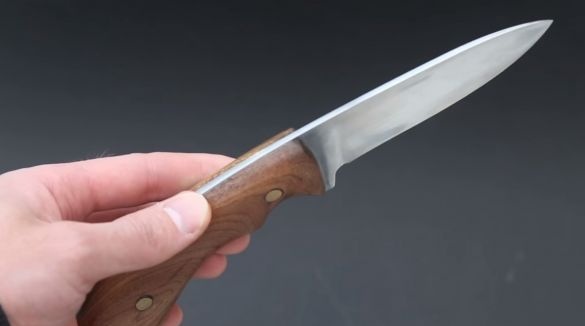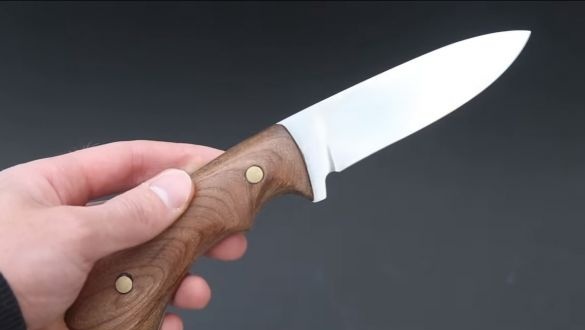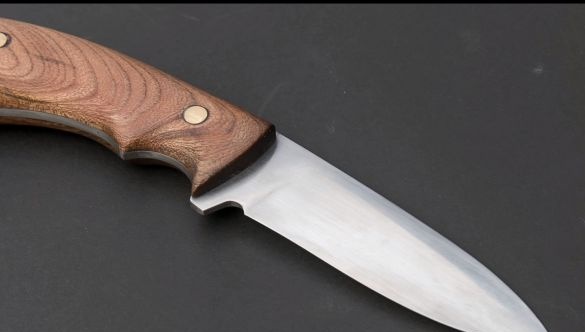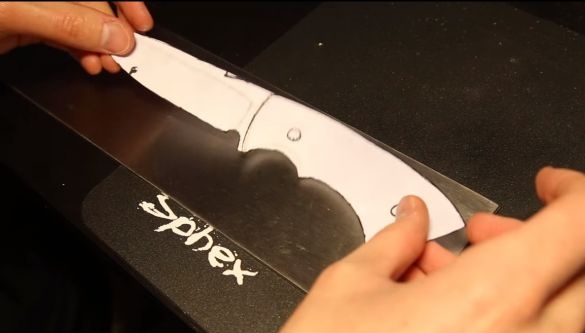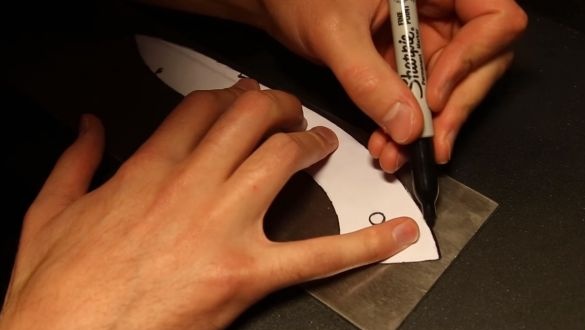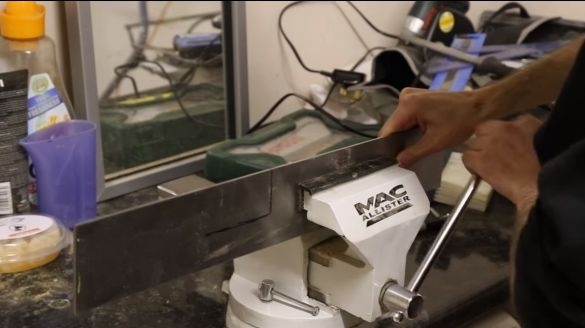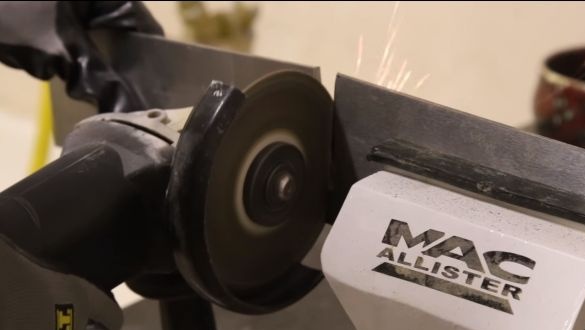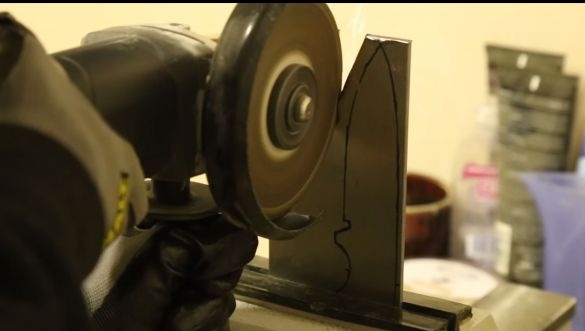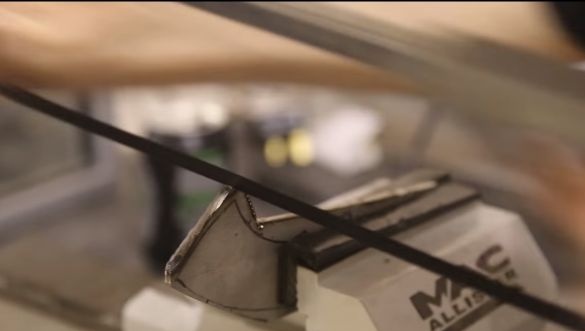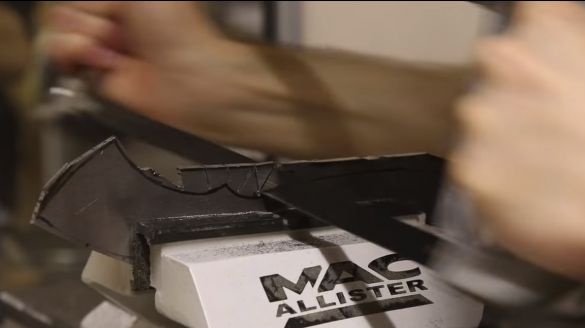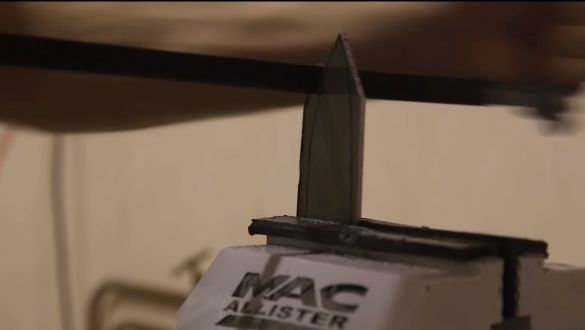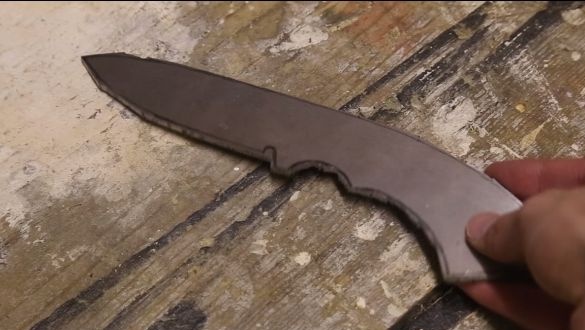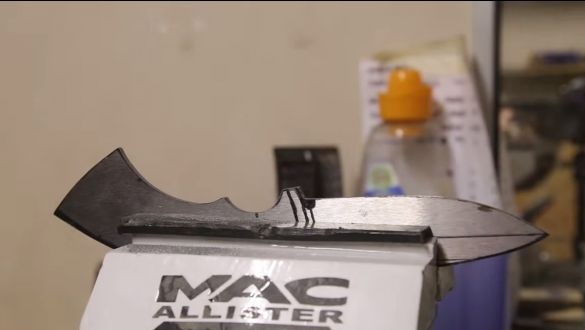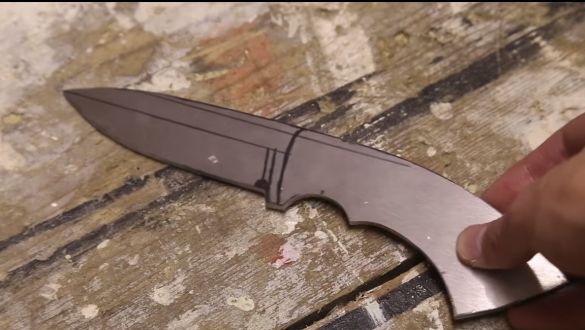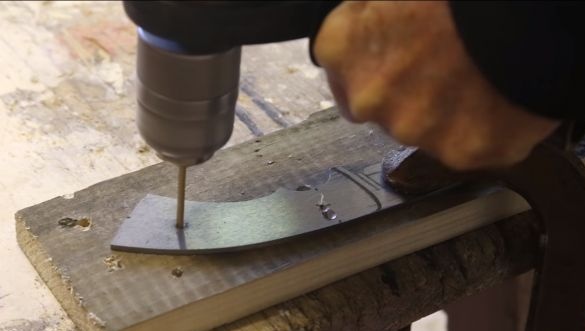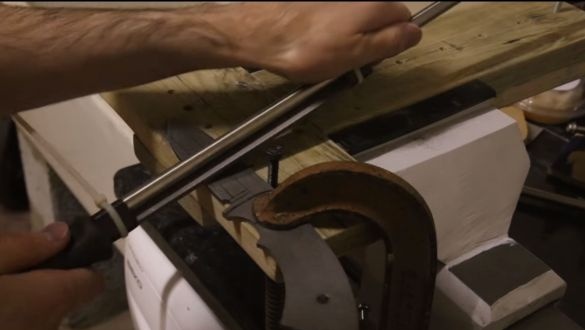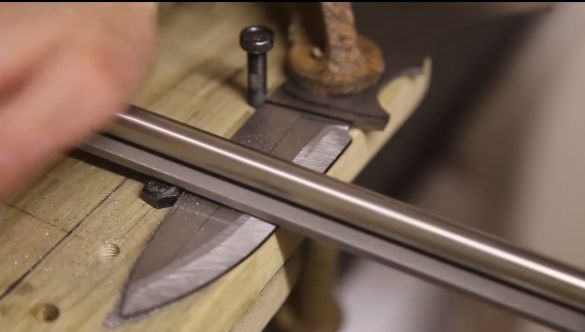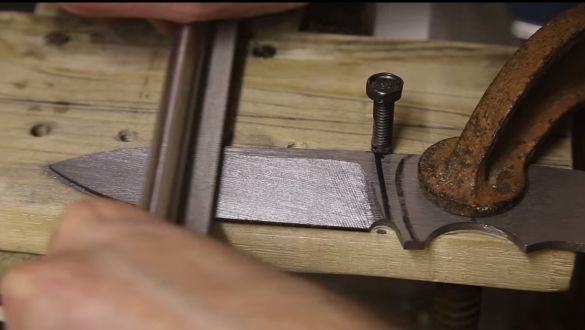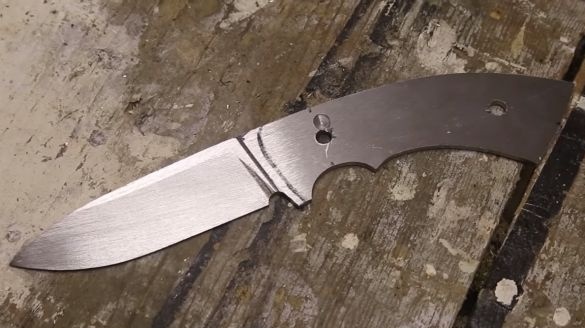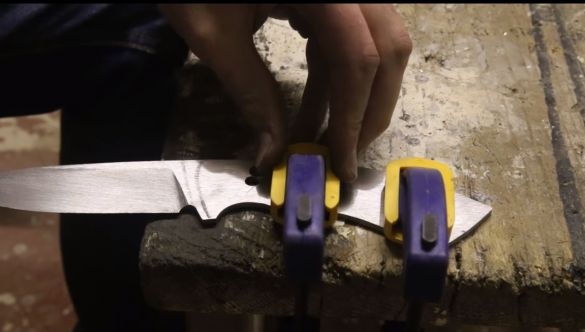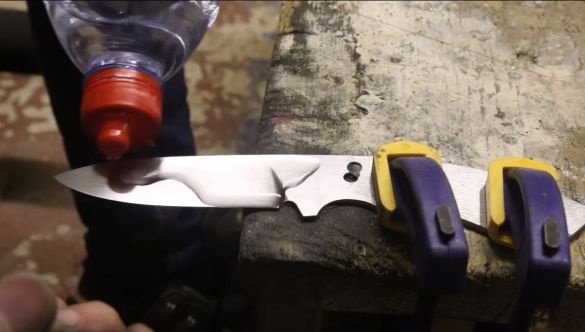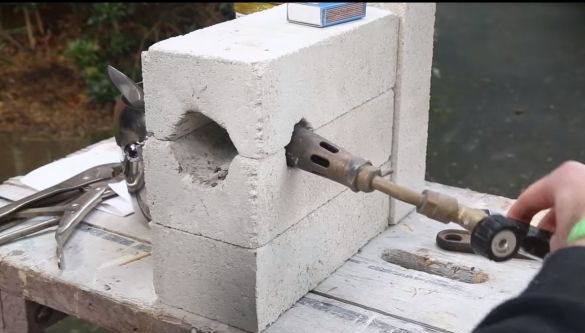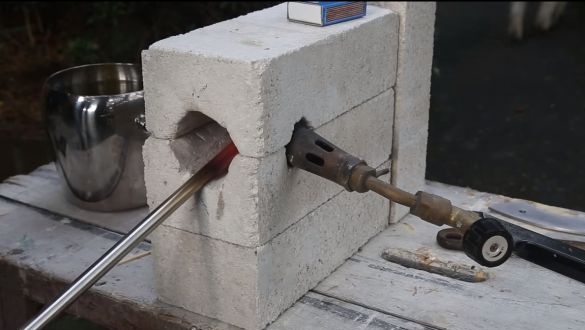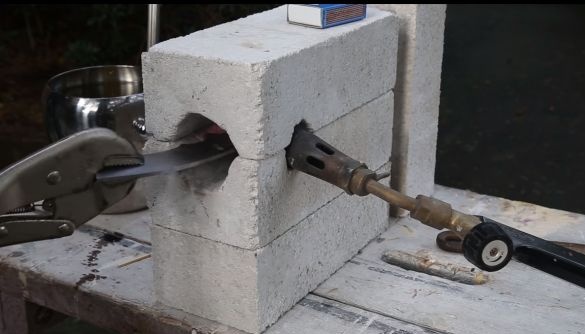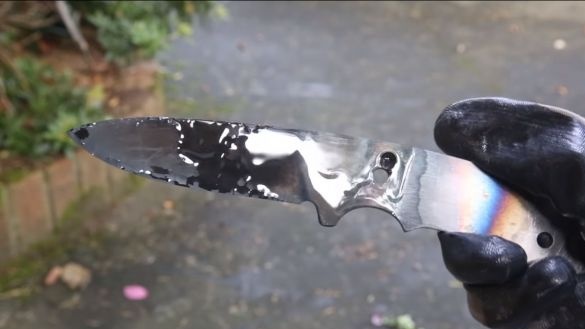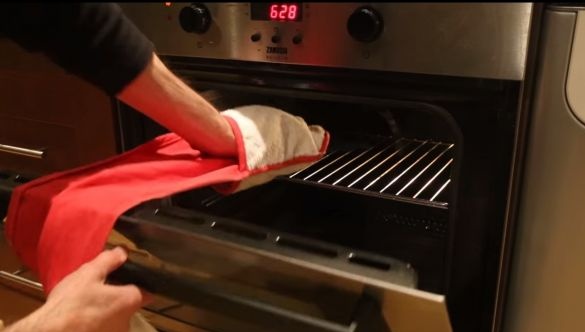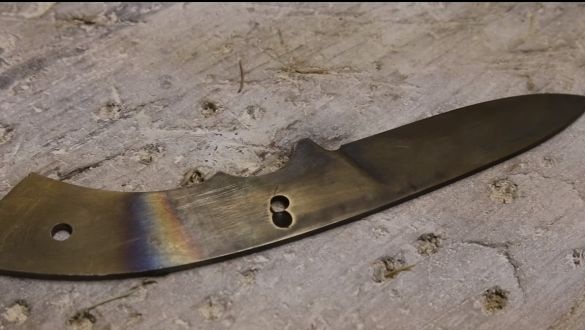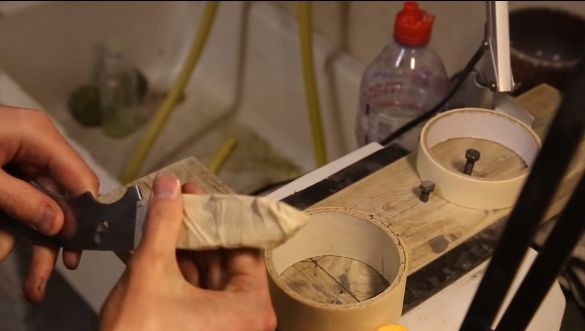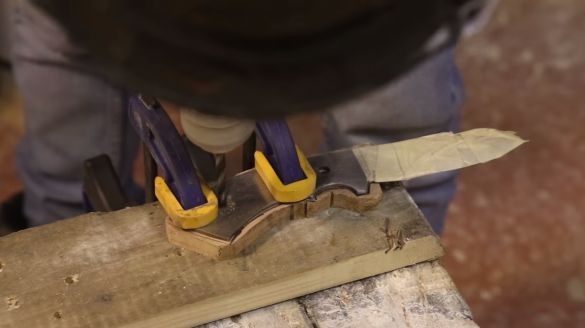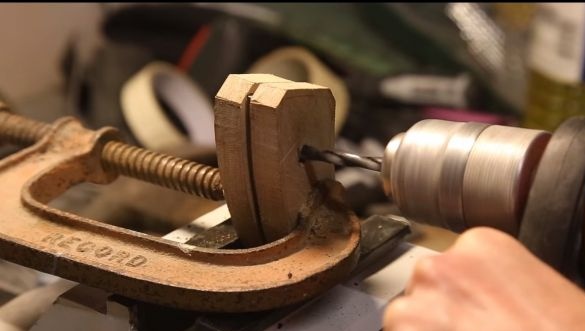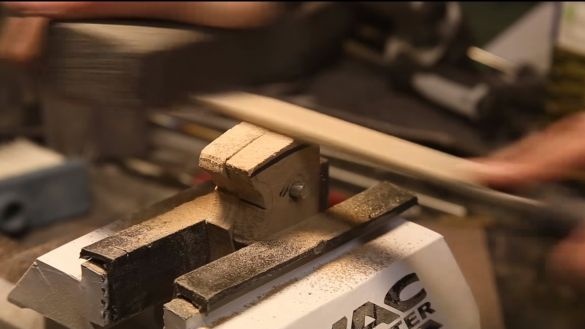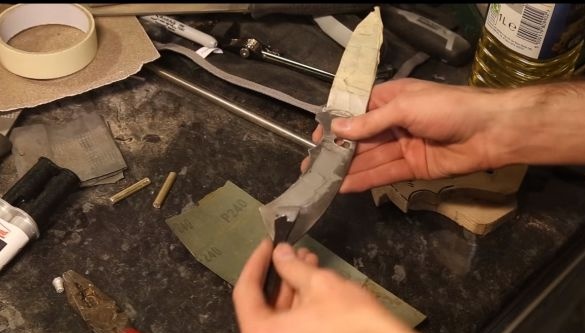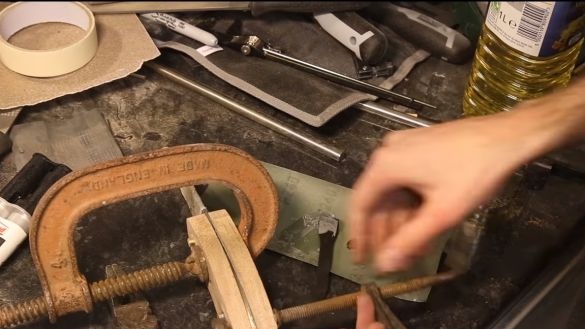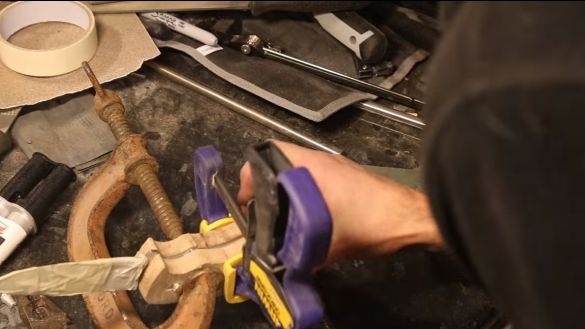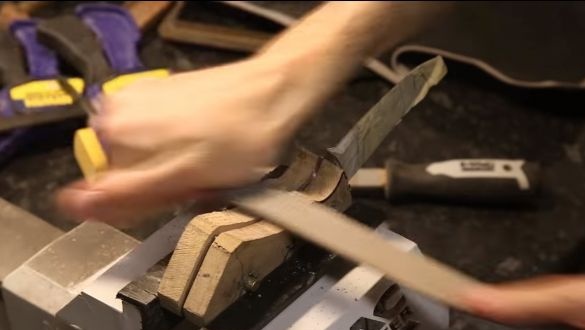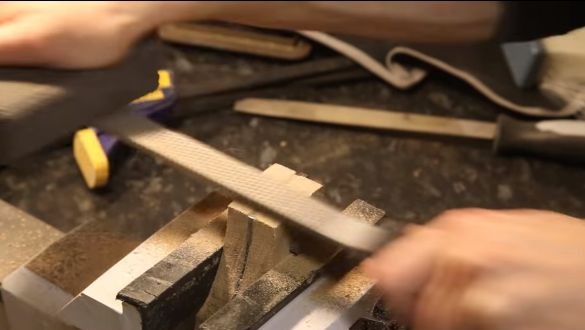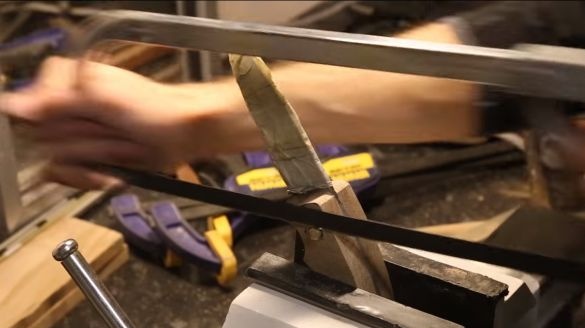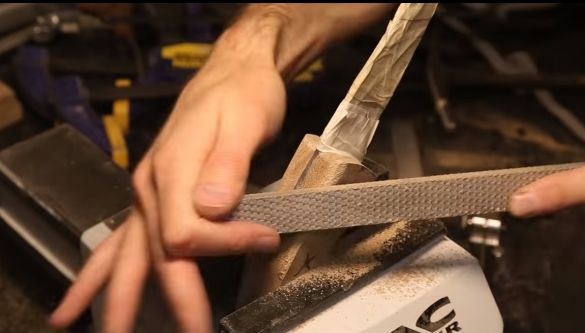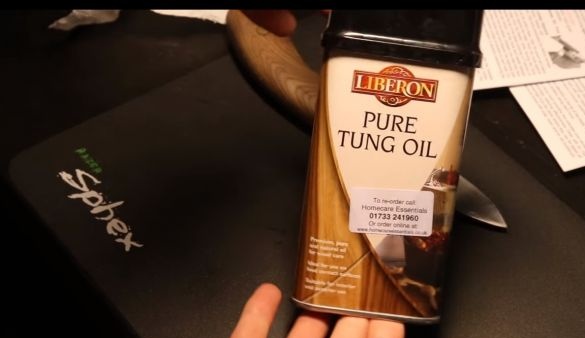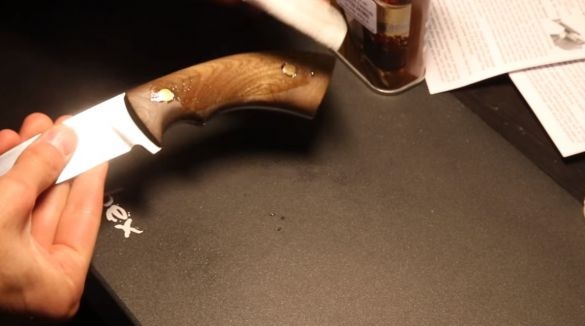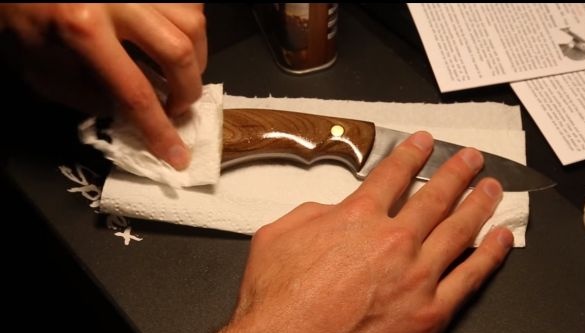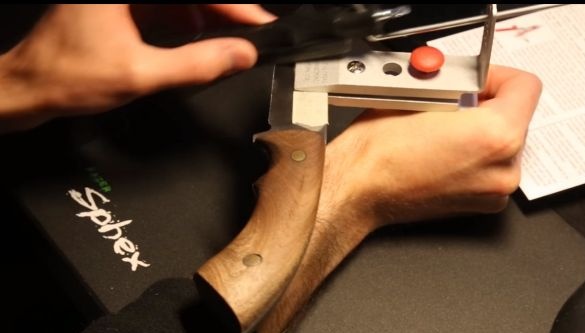Every fool can make a knife with a band saw and other similar tools. But to make a high-quality knife manually, you will need to make a lot of effort and spend time. But you can make knives manually, and many craftsmen do this. And in terms of quality they are in no way inferior to those that are made on cool equipment.
The author made this knife almost by hand. An exception will be a grinder, with the help of it the author cut the metal in order to speed up the process a little, but it is not necessary to use it, you can handle it with a usual hacksaw for metal.
An electric drill was also used, with which holes for pins are drilled. It is also not necessary to use it, you can drill holes with a hand drill or not use pins at all. Let's consider in more detail how the knife is made.
Materials and tools used by the author:
Material List:
- wood for pads on handles;
- brass rods (for pins);
- high-quality, high-carbon steel ();
- epoxy adhesive;
- oil for wood impregnation.
Tool List:
- a hacksaw for metal;
- grinder;
- for a grinder (preferably);
- drill;
- A good set of files for wood and metal;
- marker, paper, scissors (for making a template);
- sandpaper of various grain sizes;
- clamps, vice;
- oven and oil (for hardening);
- pliers, hammer.
The process of making a knife:
Step one. Cut a rough profile
To make a quality knife and not engage in improvisation in the process, it is recommended that you first draw a knife outline on paper and then cut it out. The finished blade profile can also be downloaded from the Internet and then printed on a printer.
We circle the template with a marker on a sheet of steel and proceed to cutting. The author cuts off the main parts with a grinder, this can be done manually, but since there is a grinder, why not use it?
Well, then we take a hand tool, in our case it is a hacksaw for metal. Cut the main profile. In some respects, such a saw can be turned, but still it cannot cut many corners. To solve the problem, make several cuts and cut out the problem area in pieces.
Step Two Coarse grinding
After cutting, the profile will not be ideal, but we need to make it one. For these purposes, we clamp the workpiece in a vice and process along the contour with files.This work is time-consuming, time-consuming, but generally quite doable manually.
Step Three Drill holes
In the tail section, where the handle will be, drill two holes for the pins. The diameter of the drill is chosen depending on the diameter of the existing rods, they should fit tightly into the holes. If the metal is not hardened, holes can easily be drilled using a conventional drill.
Step Four We form bevels and complete basic work with metal
It was the most crucial moment in the manufacture of the knife - the formation of bevels. They must be symmetrical, otherwise, when cutting massive objects, the knife will lead away to the side, and even the not symmetrical bevels look not very good. Before starting work, you need to mark the bevels on the blade. The most important is the centering line, which is drawn along the blade. When grinding, we focus on it, which allows you to make bevels at the same angle. This line can be drawn with a drill of the same diameter as the thickness of the blade.
We work again with hand tools, here we will need a good file for metal. We clamp the blade on the board with clamps and get to work, to stop the board, you can tighten the screws and so on.
When we form the bevels, we can proceed to grinding the blade. First we use large emery paper to remove deep scratches, and then everything is smaller and smaller. Sandpaper works better when wetted in water.
Step Five Metal hardening
The blade is ready, now it can be hardened so that it holds the sharpener for a long time. The metal is heated to such a temperature that it is not attracted by a magnet, and then cooled in oil. The desired temperature can be obtained by blowing coals with a hairdryer, for example. The author used a burner and several refractory bricks.
After hardening, such a step as a vacation follows. Thanks to this, we again soften the metal a little so that it is not brittle. Usually they do this with a domestic oven, put a knife in it and heat for an hour at a temperature of 200-300 degrees Celsius. Then just turn off the oven and let cool with the knife in the closed state. The vacation has been made and now the knife will not break, but will spring under high mechanical loads.
Step Six Cleaning
After quenching, the metal darkens, it will be possible to see traces of burnt oil on it, scale and so on. We clean this whole thing with the help of not very large sandpaper. At the end, the blade can already be polished.
Seventh step. Make a pen
For the knife, you need to make overlays on the handle. There are two options for how to do this, you can first cut the handle profile from the bar, and then cut it lengthwise and get two perfect halves. But it may not be so simple to cut exactly along with a hand hacksaw, so it is more advisable to cut two pads from non-thick stitches, besides, then they are still ground together on the knife.
First, we cut out the rough profile of the pads and glue them on the knife using epoxy glue. Do not forget to immediately install the pins, they should stick out a little above the surface of the pads. We clamp the handle with two clamps so that it glues qualitatively and reliably. Epoxy glue usually dries 24 hours, it is desirable to put the workpiece in a warm place, so the glue is guaranteed to dry in a day.
The glue has dried, remove the clamps and take the rasp, remove the massive parts of the handle and form the main profile. As soon as you complete this task, take a large sandpaper and continue to work. We bring the handle to the ideal, gradually reducing grain. It should be perfectly smooth.
Step Eight. Final work
The knife is almost ready, but it is extremely important for us not to forget to protect the tree from moisture, otherwise the handle will quickly become worthless. For these purposes it is customary to use oils, they are absorbed into the tree and it no longer absorbs moisture.You can buy special oil for wood processing or use regular linseed oil.
At the end, sharpen the knife to the blade state. For this, the author has a special manual machine that allows you to set the grindstone at a certain angle. You can also use fine sandpaper. The knife is ready, be careful and take care!

